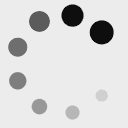Images of the World and the Inscription of War

_Images of the World and Inscription in War_ is an essay whose central motif is the aerial photograph of the camp at Auschwitz taken on April 4, 1944 by an American reconnaissance plane. On this photo, analysts identified the surrounding factories but not the concentration and extermination camp. Dialectic montage and a distanced commentary compose this film which analyses the conditions under which an image becomes readable. The gap from "seeing" to "knowing", interlacing the polysemy of words and photographs.
| Directors | Harun Farocki, Harun Farocki |
| Actor | Richard Brouillette |
| Share on |
A prescient work if there ever was one, this documentary essay raises questions about the mechanization and mathematization of perception. At a time when engineers, guided by Norbert Wiener's cybernetic utopia, are taking the first algorithmic steps towards artificial intelligence, Farocki questions the false objectivity of machines.
As early as 1988, while research on facial recognition and autonomous vehicles is underway but still relatively confidential, the filmmaker senses the danger of what he would later call "operational images," which serve no aesthetic or social function, provoke no reflection, but simply participate in mathematical operations. He denounces the subjective biases embedded in these calculations by their designers, which render them blind to anything external to their code, like a Mariotte spot.
Beyond the false, he explores the artificial, the fabricated (such as the wave machine at the beginning of the film), and the grip of appearance on reality. Furthermore, he highlights the collusion between what preserves and what destroys (the bombers that photograph the bombs they drop in flight), recalling the double meaning of the German word "Aufklärung": both the Enlightenment of the 18th century and reconnaissance (military, facial, etc.).
An element of the film worth mentioning, as surprising as it is remarkable, is the music, composed of disjointed fragments of pieces by Beethoven and Bach, which was created by placing an open pair of scissors on the tapes to shield them from a demagnetizer that erased anything not protected by metal. Somehow, a way to outsmart the machine...
Richard Brouillette
Filmmaker, producer, chicken farmer, and accountant

-

Français
1h14
Language: Français -

English
1h14
Language: English
- Année 1989
- Pays Germany
- Durée 74
- Producteur Harun Farocki Filmproduktion
- Langue French, English, German
- Sous-titres French, English
- Résumé court Film essay based on the analysis by two CIA employees, 33 years later, of the US Air Force aerial photographs taken over the Nazi death camps during World War II.
- Mention festival German Film Critics Association Awards - Best Documentary of 1989
- Ordre 4
A prescient work if there ever was one, this documentary essay raises questions about the mechanization and mathematization of perception. At a time when engineers, guided by Norbert Wiener's cybernetic utopia, are taking the first algorithmic steps towards artificial intelligence, Farocki questions the false objectivity of machines.
As early as 1988, while research on facial recognition and autonomous vehicles is underway but still relatively confidential, the filmmaker senses the danger of what he would later call "operational images," which serve no aesthetic or social function, provoke no reflection, but simply participate in mathematical operations. He denounces the subjective biases embedded in these calculations by their designers, which render them blind to anything external to their code, like a Mariotte spot.
Beyond the false, he explores the artificial, the fabricated (such as the wave machine at the beginning of the film), and the grip of appearance on reality. Furthermore, he highlights the collusion between what preserves and what destroys (the bombers that photograph the bombs they drop in flight), recalling the double meaning of the German word "Aufklärung": both the Enlightenment of the 18th century and reconnaissance (military, facial, etc.).
An element of the film worth mentioning, as surprising as it is remarkable, is the music, composed of disjointed fragments of pieces by Beethoven and Bach, which was created by placing an open pair of scissors on the tapes to shield them from a demagnetizer that erased anything not protected by metal. Somehow, a way to outsmart the machine...
Richard Brouillette
Filmmaker, producer, chicken farmer, and accountant
-

Français
Duration: 1h14Language: Français1h14 -

English
Duration: 1h14Language: English1h14
- Année 1989
- Pays Germany
- Durée 74
- Producteur Harun Farocki Filmproduktion
- Langue French, English, German
- Sous-titres French, English
- Résumé court Film essay based on the analysis by two CIA employees, 33 years later, of the US Air Force aerial photographs taken over the Nazi death camps during World War II.
- Mention festival German Film Critics Association Awards - Best Documentary of 1989
- Ordre 4
